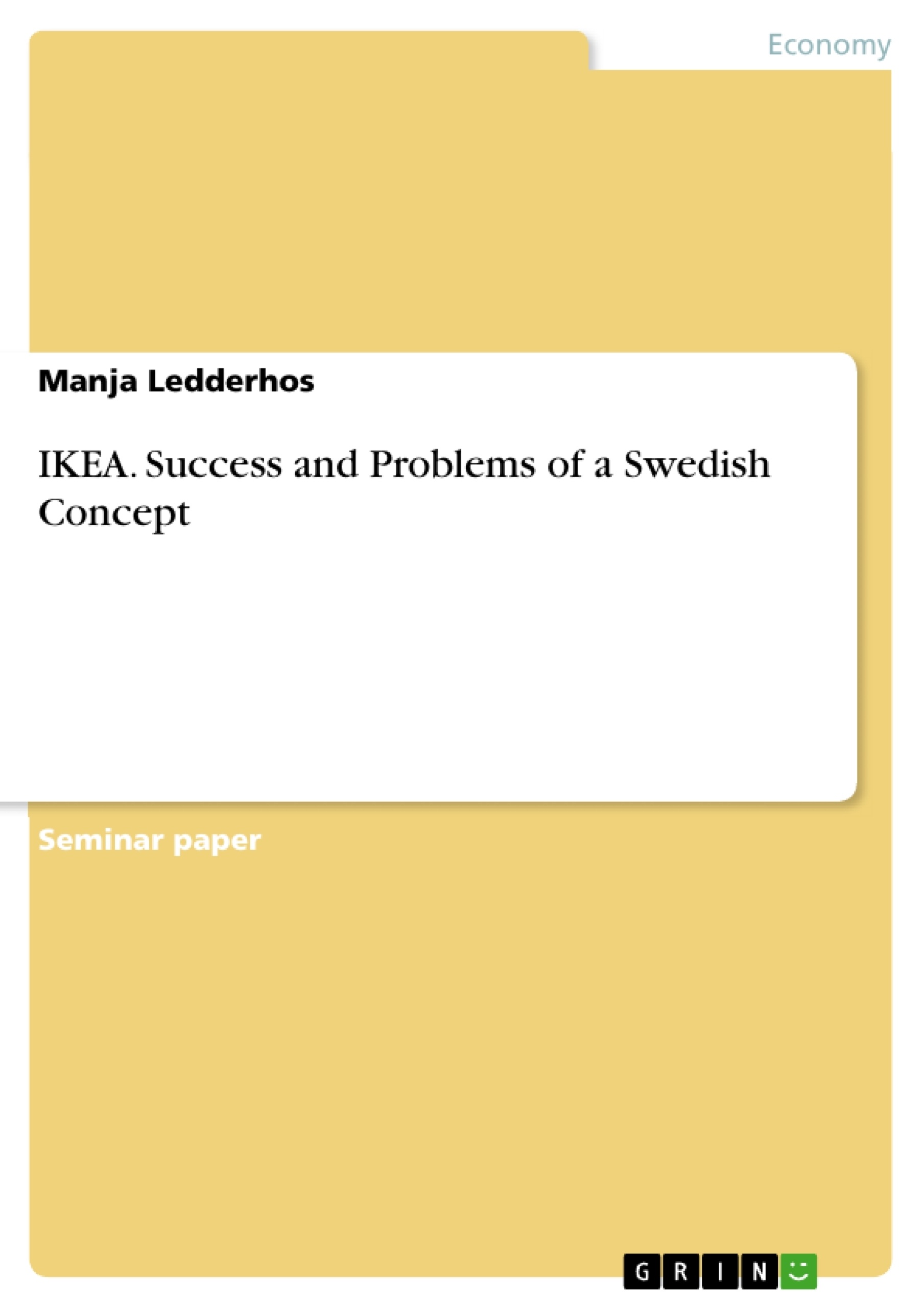1.1. Background Information
IKEA is a well known Swedish company where almost every European person under 30 has
purchased something from to decorate their flats. In only a few decades the company “went
from the woods of southern Sweden to 31 countries around the world”1 and has become a
large Multinational cooperation (MNC) with an interorganisational network.2 Higher tariffs,
transport costs and the loss of economies of scale in domestic production further encourage
production abroad.3 The Swedish market is comparably small and IKEA had to expand in
order to keep their steady growth rates. The success came as a surprise to many since the
furniture business is originally a local business.4 IKEA is the only company in their field, that
has been able to expand so widely. The company seems to offer something that is unique to
people and that appeals to them as something preferable. The background of the company
seems to play a role in managing this uniqueness where Swedish influence on leadership,
corporate culture and product offer leads towards the successful “IKEA spirit”.
While the internationalisation of IKEA is one of the reasons for their great success, it seems
that it is also the source of trouble. It seems that today’s “game of global strategy [is]
increasingly … a game of coordination”5. The difficulties that IKEA faces is to keep their
unique “IKEA spirit” and still be successful around the world.
1.2. Aim of the Paper
The aim of the paper is to look at the sources for IKEAs success where special emphasis will
be given to the Swedish impact on leadership, corporate culture and product offer and the
success they have with it. Internationalisation puts challenges on the above success areas and
those need to be evaluated, as well.
1.3. Delimitations
IKEA is a very complex company and I couldn’t concentrate on all of the given information.
For example, I did not write about the purchasing network and relationships to suppliers.
Also, customer contacts are not dealt with in depth.
1 http://www.IKEA.com/about_IKEA/timeline/splash.asp, (21.02.03).
2 Forgens/Holm/Thilenius (1997). p.477.
3 Buckley/ Casson (1998). p. 555.
4 Grol/Schoch (1998), p.
Table of Contents
- Introduction
- Background Information
- Aim of the Paper
- Delimitations
- Analysis of the IKEA Way
- Corporate Culture
- Lead in
- Corporate culture as reflection of Swedish culture
- Success of IKEAs corporate culture
- Enforcement of Corporate Culture worldwide
- Leadership
- Lead in
- Swedish traits in Management style
- Enforcing Management Style
- Impact on Product Range
- Lead In
- Sweden's national advantage in home design
- Sweden's impact on IKEAs product
- Successful spread of Swedish product design
- Analysis of Problems with the IKEA way
- Lead in
- Scandinavian leadership at all subsidiaries
- Corporate culture versus cultural sensitivity
- Standardisation versus adaptation to national conditions
- Recommendations
- Conclusion
Objectives and Key Themes
This paper aims to analyze the sources of IKEA's success, with a particular focus on the Swedish influence on its leadership, corporate culture, and product offerings. It also examines the challenges posed by internationalization to these success factors.
- The impact of Swedish culture on IKEA's corporate culture and leadership style.
- The success of IKEA's unique corporate culture and its contribution to employee satisfaction and customer service.
- The influence of Swedish design principles on IKEA's product range and its global appeal.
- The challenges faced by IKEA in maintaining its "IKEA spirit" while adapting to diverse cultural contexts internationally.
- Recommendations for managing IKEA's global expansion and navigating cultural differences.
Chapter Summaries
- Introduction: This chapter provides background information about IKEA's growth and internationalization, highlighting its origins in Sweden and its transformation into a global multinational corporation. The chapter also outlines the paper's objectives and limitations.
- Analysis of the IKEA Way: This chapter delves into IKEA's unique approach, examining its corporate culture, leadership, and product range. It highlights the strong connection between IKEA's success and its Swedish heritage, particularly in terms of its employee-centric approach, informal management style, and emphasis on Scandinavian design.
- Analysis of Problems with the IKEA way: This chapter explores the challenges faced by IKEA in managing its international expansion, particularly in terms of maintaining its cultural identity and adapting to diverse cultural contexts.
Keywords
This paper explores the key concepts of corporate culture, leadership, product design, and internationalization, focusing on the specific case of IKEA and its Swedish origins. It delves into the relationship between national culture and corporate strategy, examining the impact of Swedish cultural values on IKEA's success and the challenges of managing cultural differences in a global marketplace.
- Quote paper
- Manja Ledderhos (Author), 2003, IKEA. Success and Problems of a Swedish Concept, Munich, GRIN Verlag, https://www.grin.com/document/11506



